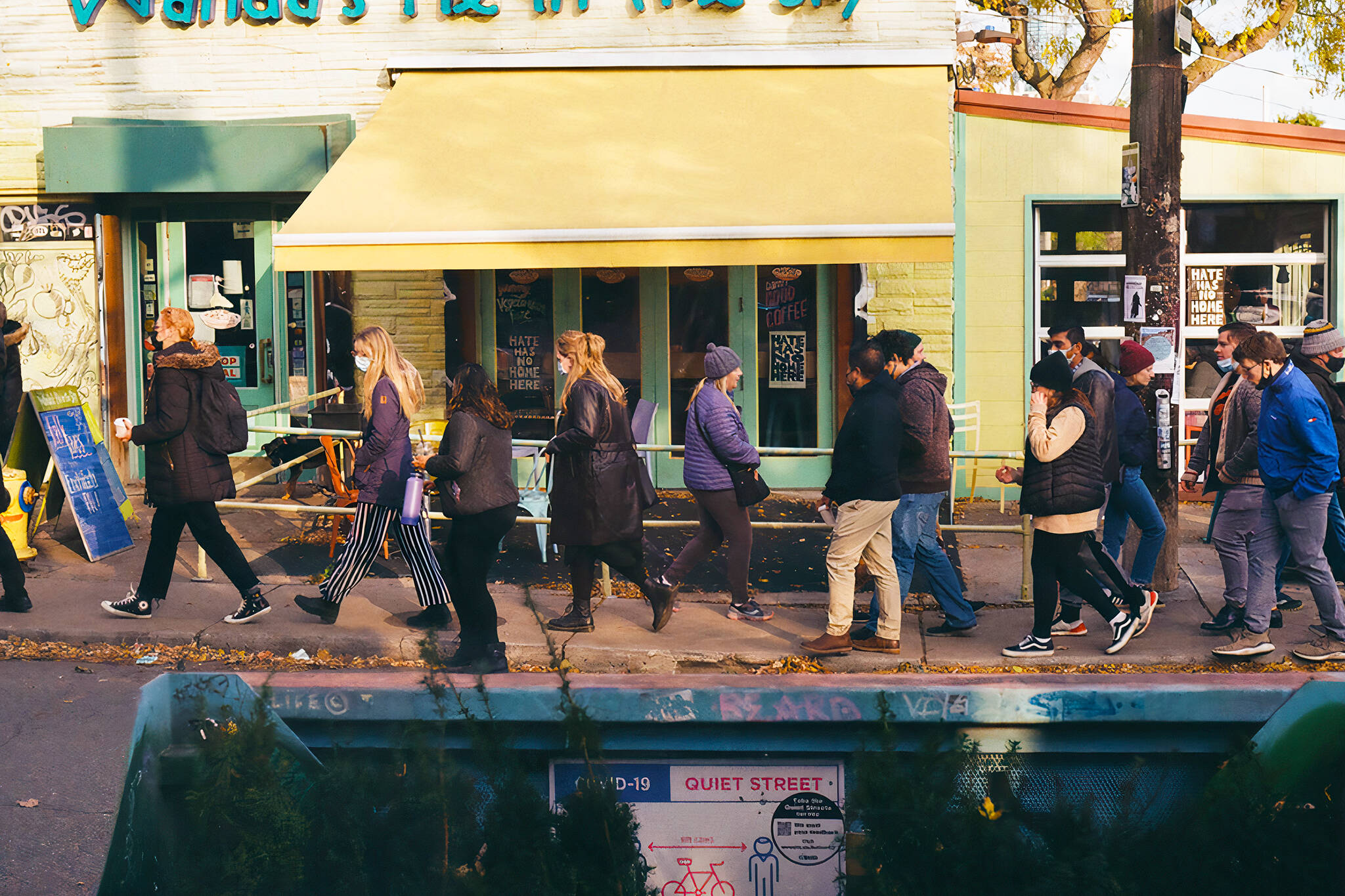
Ontario health officials want to bring in more measures immediately to curb Omicron
Just when Ontario residents thought we were getting close to lifting proof of vaccination requirements and even futher dropping capacity limits in some settings, Omicron has made its grand entrance to the party and asked us to hold its beer.
Daily new case counts spiked to more than 2,400 on Thursday — numbers not seen since May — while the variant of concern begins its takeover to become the dominant strain of the virus provincewide.
Though Premier Doug Ford and his team have assured the public the strain's arrival here at home was no need to panic and thus far, it appears that Omicron symptoms are pretty mild, the province's COVID-19 Science Advisory Table released new modelling projections along with some recommendations on Thursday that those looking forward to a full return to normalcy will not be happy about.
7/10 Slide 11: We model a “circuit breaker”: cutting contacts by 50% through public health measures, while rolling out boosters quickly. That could blunt the force of the Omicron wave. #COVID19ON https://t.co/Gyqw5lQXFp pic.twitter.com/8aCZaudFZr
— COVIDScienceOntario (@COVIDSciOntario) December 16, 2021
While predicting a worst case scenario of upwards of 10,000 cases per day before Christmas, members of the province-appointed organization are calling for immediate "circuit breaker" action that includes additional public health measures.
Though the hastened booster rollout is definitely helpful, the table says, residents still need to cut the number of people they're currently in physical contact with by at least 50 per cent.
Those who didn't completely block the term out of their minds after it started arising last year will remember that a circuit breaker, at least as it was describd in 2020, is a targeted, stringent lockdown where all non-essential businesses and services are shuttered for a short period of time with a set end date.
Yet in this case, the table has apparently not made any explicit suggestion to shut down segments of the economy, but is advocating for the implementation of some sort of "strong additional public health measures," whatever that looks like.
The Science Advisory Table says while the government doesn't need to lockdown, close schools or issue a stay-at-home order, the province needs to reduce contacts by 50% in order to blunt Omicron. #onpoli
— Colin D'Mello CTVNews (@ColinDMello) December 16, 2021
"An immediate circuit breaker can blunt impact," their report reads, suggesting that new restrictions be implemented literally yesterday, Dec. 15.
"Increasing vaccination is not enough to slow this wave. Circuit breakers with strong additional public health measures and strong booster campaigns (250,000 per day) could blunt the Omicron wave. High-quality masks, physical distancing indoors, improved ventilation, and increased access to rapid testing can help buy time for boosters to take effect and keep schools open."
It is noteworthy that such predictions of future case numbers have not come to fruition in the past and that this type of modelling is somewhat of an inexact science.
Ontario announces stronger proof-of-vaccination requirements as cases spike https://t.co/XrUpDYjM9S #Ontario #ONpoli
— blogTO (@blogTO) December 10, 2021
Still, it is clear that officials are taking Omicron very seriously at this point, and with capacity limits for large entertainment venues cut just yesterday and the third dose program now expedited, it isn't hard to imagine we'll be facing further lockdown measures in the coming weeks, especially in the wake of this new advice.
But, Dr. Adalsteinn Brown, head of the advisory table, did give some hope that things won't get nearly as bad as earlier iterations of lockdown, saying in his press conference today "I don't think that we need to necessarily stop things full out, I do think it's important to kind of maintain activity in a number of very hard-hit business sectors and maintain kids at school."
Latest Videos
Latest Videos
Join the conversation Load comments







